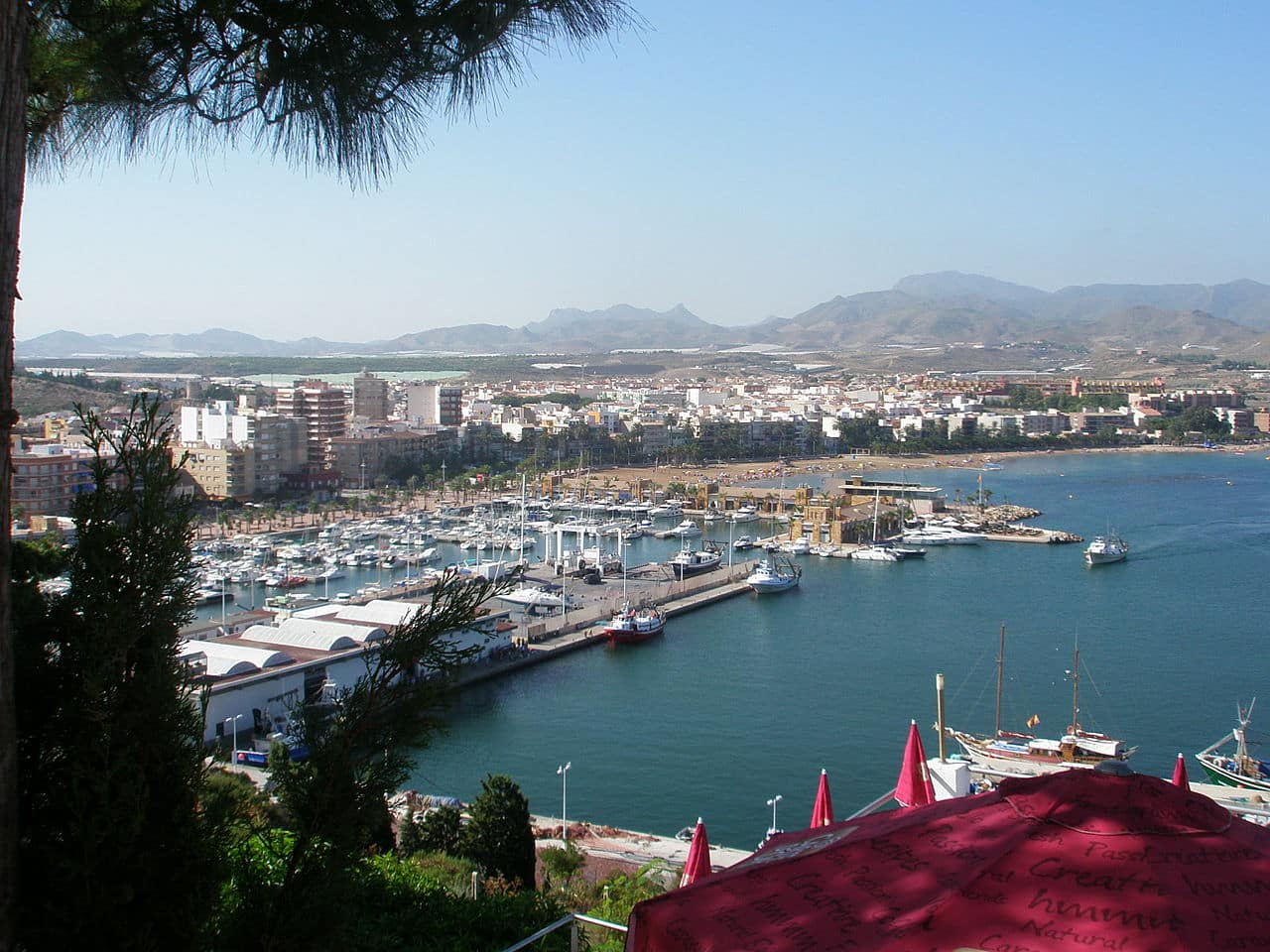
With thirty-five kilometers of coastline, Mazarrón It is one of the best tourist destinations in the Mediterranean. But it is also the living history of those who have crossed that sea since time immemorial, as evidenced by the Phoenician and Roman traces that are preserved in its municipal area.
It is located southeast of the Murcia province, in the region of Lower Guadalentín, so named for the river that bathes it. Also, as with other towns on the Spanish coast, it is divided into the center of Mazarrón and the port of the same name, with around thirty-three thousand and eleven thousand inhabitants respectively. If in the first you have the main monuments, around the second are the beaches. Therefore, we are going to talk to you about what you can see and do in both.
Archaeological heritage of Mazarrón
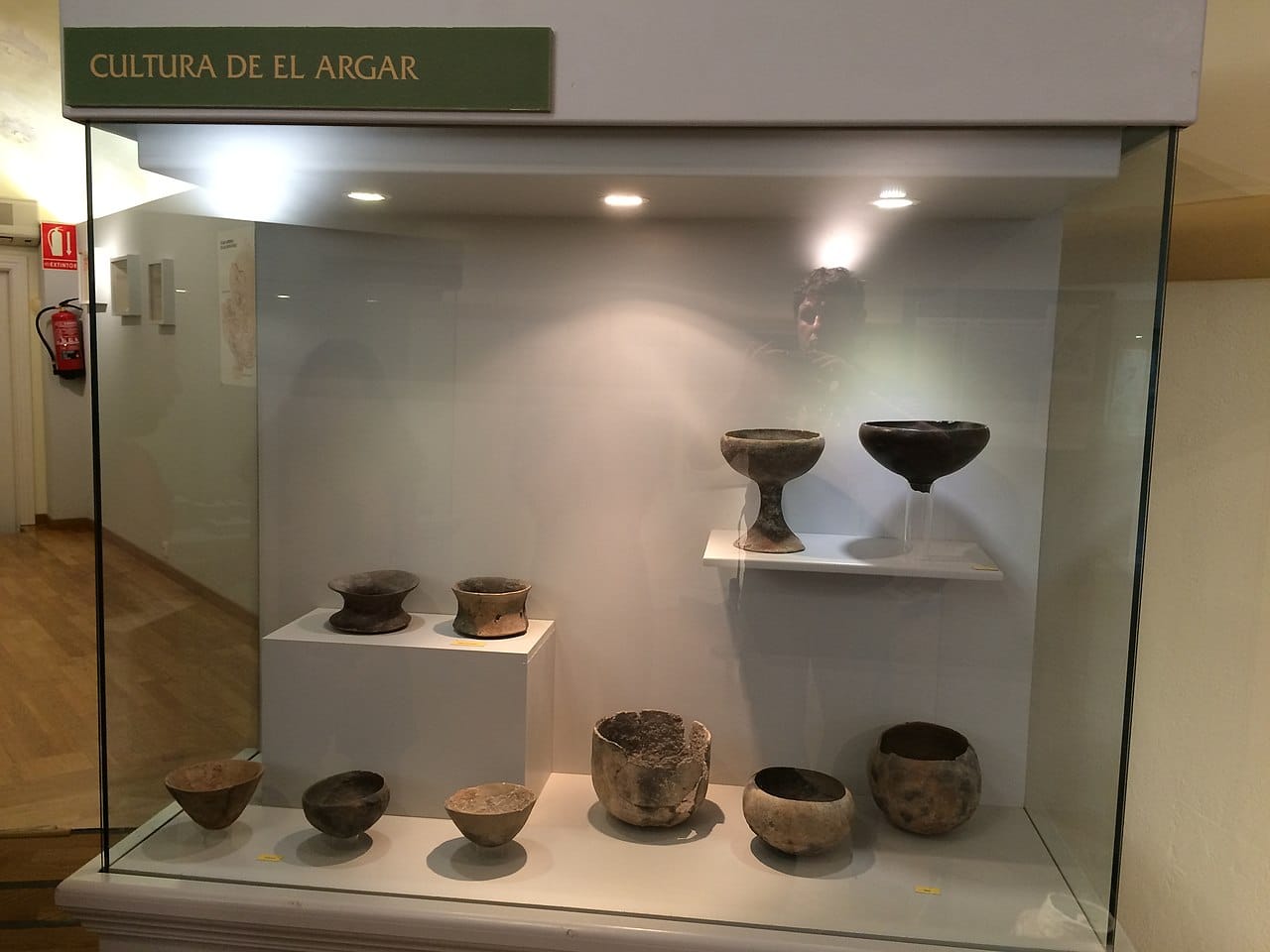
Exhibition of remains of the Argaric culture
The oldest remains of human presence in the area belong to the Middle Paleolithic and are close to lighthouse dam. But there are also those of the Superior in the caves of Morote and Las Palomas; of the Eneolithic at the site of the Lead Head and of the Argaric culture in Las Toscas de María, Las Víboras and the Cerrico Garden.
More curious is the presence of two Phoenician ships sunk in the Puerto de Mazarrón, which have been dated two thousand six hundred years ago. This town would have arrived attracted by the mining wealth of silver and lead in the area. However, the Phoenicians were traders, they did not exploit the land. Therefore, it would be the Romans who would settle in the region to extract these minerals and be located near Carthage Nova. Later, we will talk extensively about these ships.
In fact, there are early Roman remains in the Loma de Sánchez and the Coto Fortuna. But their presence intensified in the first and second centuries of our era when, in addition, they created factories of garum, a fish sauce that made Latinos go crazy. From this period are the deposits of the heads of San Cristóbal and Perules, next to the urban area; of old quarries and Azohia. But perhaps the most important is that of the village of El Alamillo, in the vicinity of the homonymous beach.
You can even see Roman remains inside the urban area of Mazarrón. Among them, you have house on the street was, dated between the IV and V centuries of our era, and the milestone or post with an inscription paying tribute to the emperor Augusto.
The Vélez castle and other civil monuments of Mazarrón
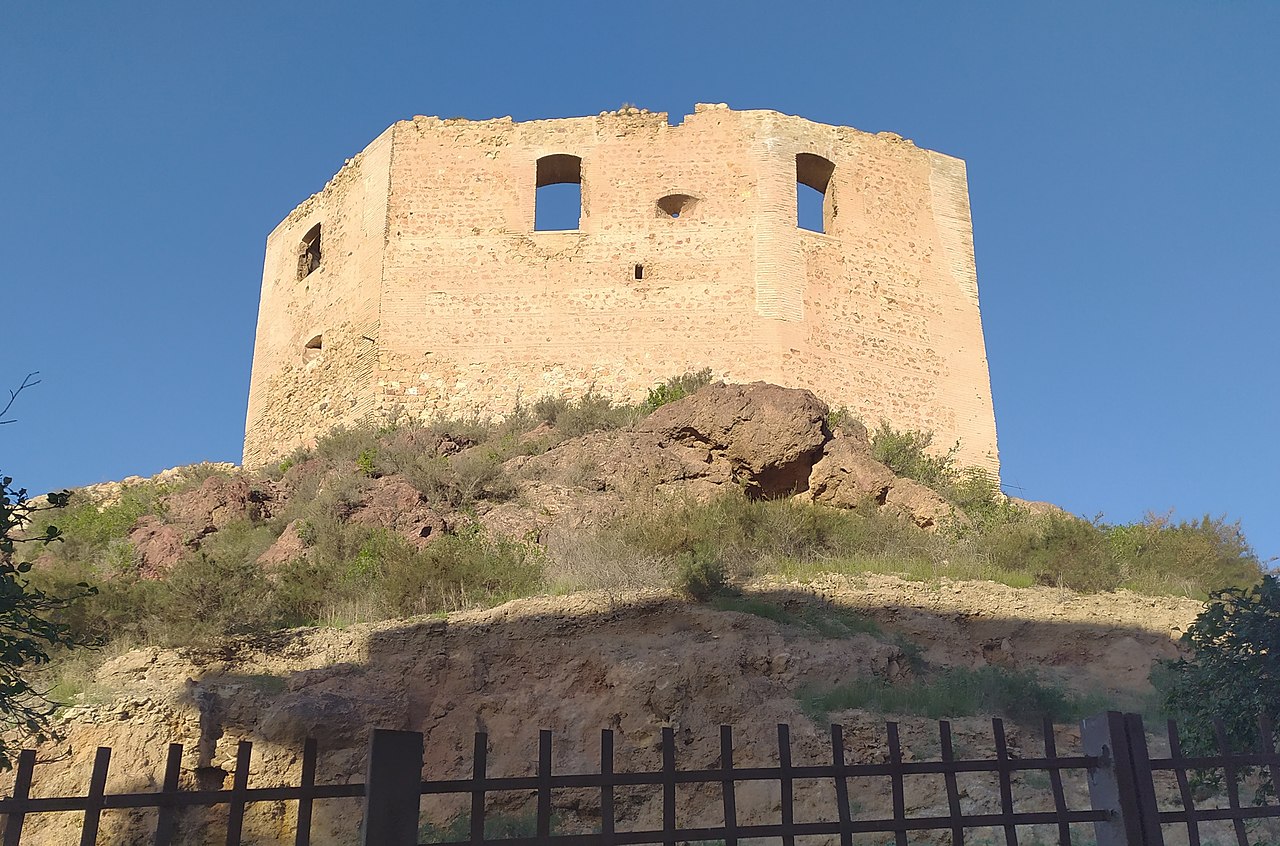
Remains of the Vélez castle
The castle of Mazarrón is located in the heart of the town, on a promontory, and is currently in ruins. It was built in the XNUMXth century by the Fajardo family, who would later become the Marquises of Vélez. It occupied an area of three thousand square meters and was arranged in three parts: the fortress, the parade ground and the walls. has been declared A Cultural.
Near the castle is the windlass tower, which also dates from the end of the XNUMXth century. Its function was to watch the coast to prevent pirate attacks. I shared this mission with other defensive towers in the area that you should also know about. Between them, those of the Horses and of Santa Isabel. The latter, which also holds the classification of Asset of Cultural Interest, is somewhat later, specifically, from the XNUMXth century.
Different character has the Arch aqueduct, an important work of hydraulic engineering dated at the end of the XNUMXth century. Built in masonry, stone and lime, its construction quality will give you an idea of the fact that it was in use until recently to supply water to the El Alamillo field.
They also served economic purposes. Mazarrón mining reserves. It is a set of buildings in ruins and other facilities built as early as the XNUMXth century to exploit the minerals in this area. As the works done by the Romans were used, you can also see some impressive open-cast mine. For example, precisely short roman.
Buildings of great artistic value that you must see in the Murcian town
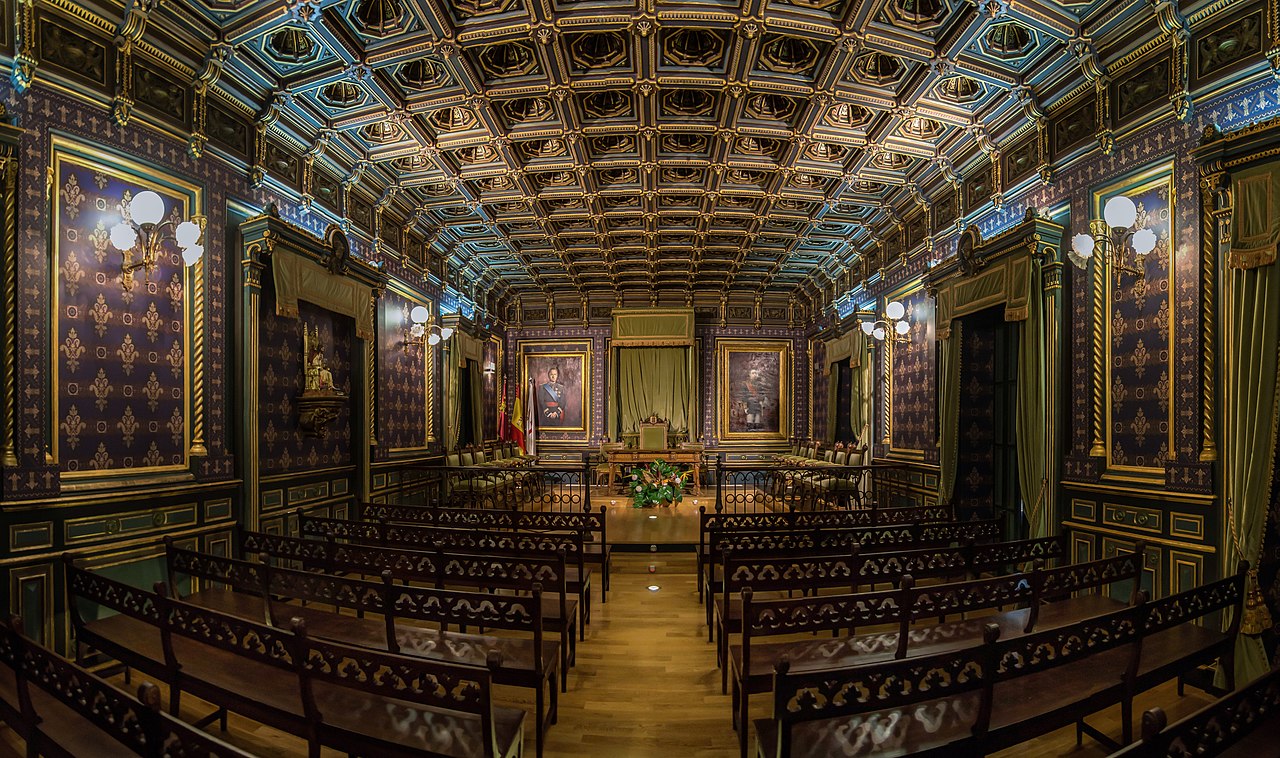
The beautiful Plenary Hall of the Mazarrón Town Hall
There is no shortage of constructions made with exquisite artistic quality in this beautiful Murcian town. One of them is the Casino building or Cultural Athenaeum. Its exact date of construction is unknown, as well as who its architect was, but it is known that it already existed at the end of the XNUMXth century. It responds to the eclectic style typical of the time. Inside, the cast iron spiral staircase attributed to the eiffel school, the famous creator of the popular Parisian tower.
To the same period belongs the Town Hall building, in its case the work of the architects Francisco Rodenas y Francis de Paula Oliver. The latter would later design the Town Hall of Cartagena. It is a construction of neoclassical dyes and three floors. The upper one, smaller than the others, has separate side terraces with a balustrade and a clock presides over the complex under a zinc pavilion.
As for the interior, it stands out the Plenary Hall, with a spectacular coffered ceiling and period furniture. But also the old City Hall. For a few years, it has held the category of Asset of Cultural Interest.
The church of San Andrés and other beautiful temples

Church of the Immaculate Convent
Built by order of the Marquis of Villena in the XNUMXth century, the church of San Andrés has undergone various reforms. For this reason, only the central nave with its marvelous Mudejar coffered ceiling and its pictorial decoration. For her part, the Church of San Antonio de Padua, which you will find at the foot of the Vélez castle, is from the same period and construction elements have also been added later.
In his case, it is the bell tower and the sacristy. It is an austere temple that responds to the classicist style and that has an image of San Antonio de Padua in a niche on its main façade. Likewise, inside it is worth noting the decoration of the pendentives in the transept dome, which pictorially represent different saints.
In turn, the convent of the Immaculate It was built in the XNUMXth century by the Franciscan monks of San Pedro de Alcántara to commemorate the so-called Miracle of Bolnuevo. He says that on November 17, 1585 several pirate ships arrived at the coast of Mazarrón with the aim of looting the town. However, thanks to the mediation of the Virgin, they could not do it.
Regarding the temple itself, the side chapel, which is considered the remains of an old XNUMXth century sanctuary, and, of course, the image of the Immaculate, beautifully decorated. Next to the aforementioned Torre de los Caballos, there is also a hermitage dedicated to the Virgin.
The religious heritage of the Murcian town completes the effigy of Sacred Heart of Jesus, which dominates it from Mount Santa Catalina since 1924. However, it was thrown away during the Civil War, so it had to be rebuilt at the end of the war.
The Interpretation Center of the Phoenician ship
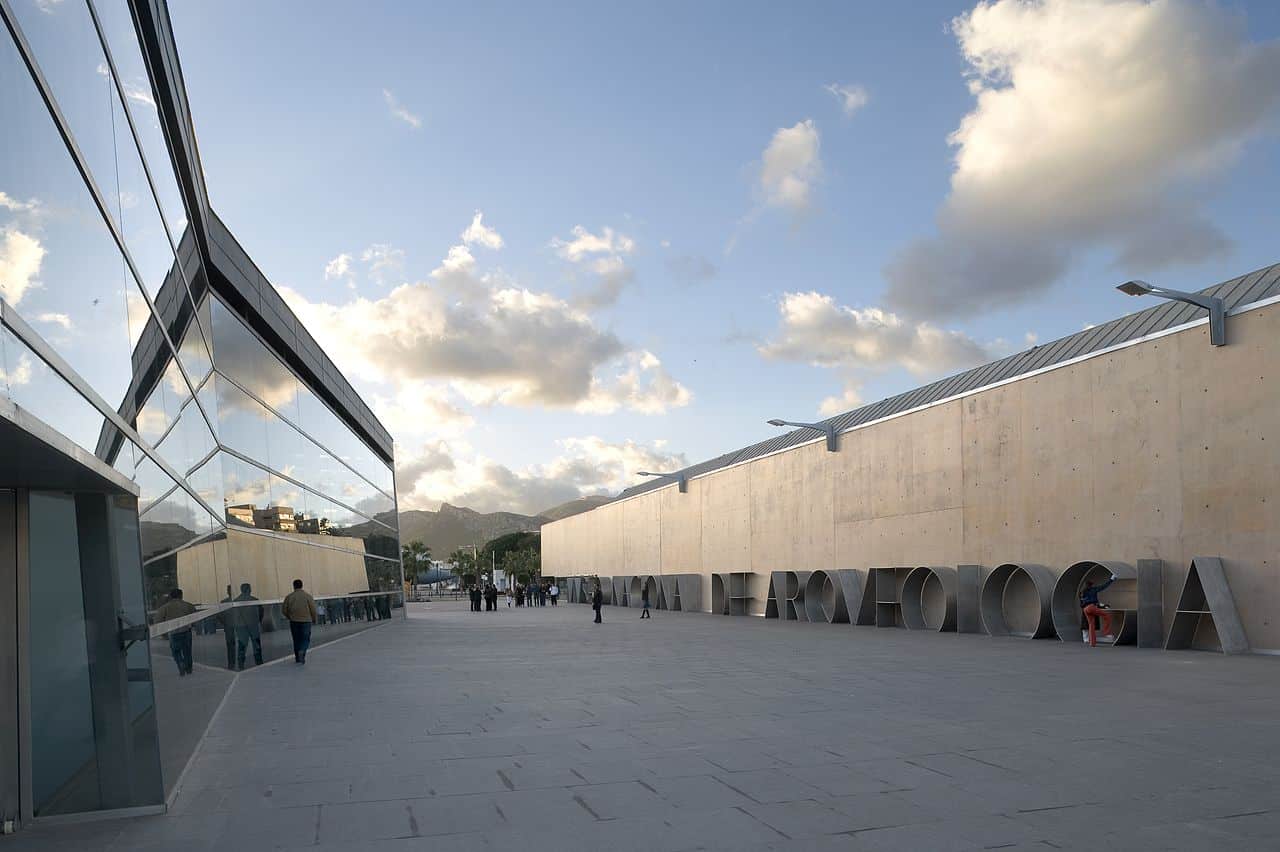
National Museum of Underwater Archeology of Cartagena, where most of the remains of Phoenician ships are
As we told you before, two Phoenician ships sunk about two thousand six hundred years ago were found in the vicinity of the island's beach. Therefore, in Mazarrón you can visit a interpretation Center that explains these archaeological discoveries and also how the contacts of this people from the Near East with the primitive people of Mazarrón were.
Likewise, in the exhibition you will see remains of the ships themselves along with model reproductions. However, most of the former are found in the National Museum of Underwater Archeology from Cartagena, which, by the way, we also recommend you visit.
The beaches and surroundings of Mazarrón
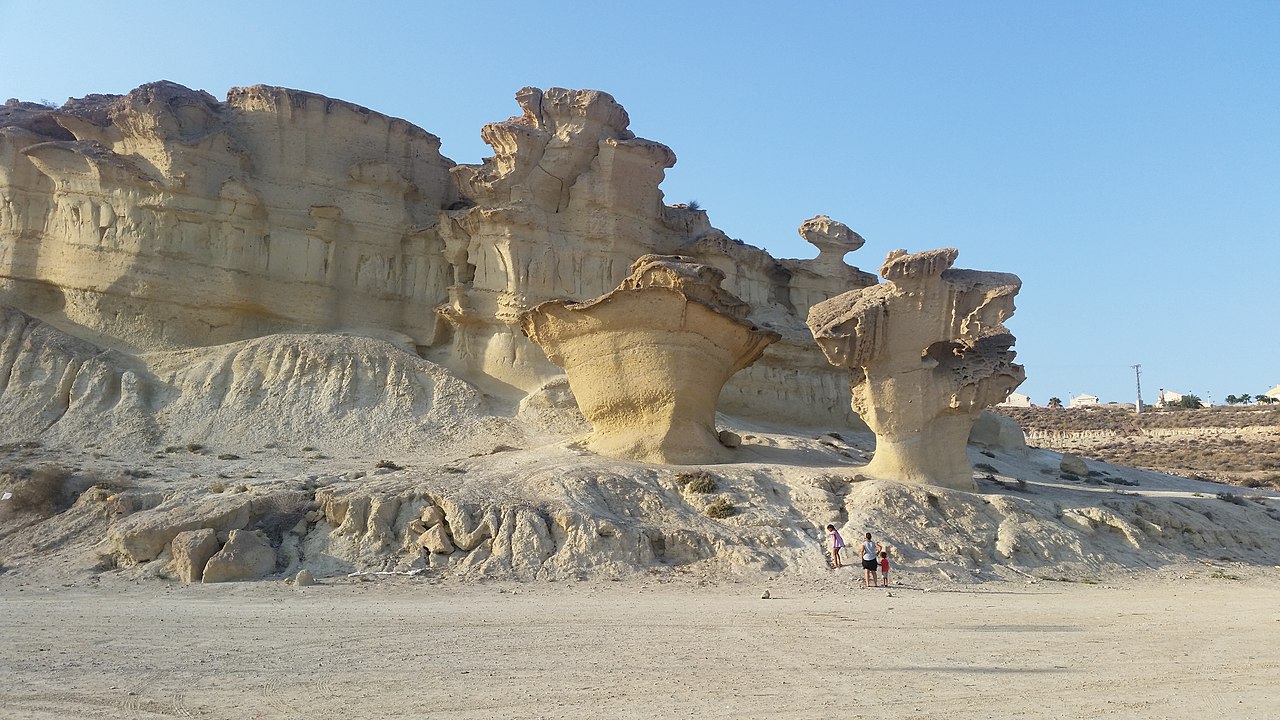
The spectacular Claystones of Bolnuevo
On the other hand, if we are talking about a Levantine town, good weather is guaranteed. Consequently, you will want to enjoy its magnificent beaches. Ten of them are still almost virgin coves and all of them stand out for their impressive sea beds that make them the perfect place for you to practice scuba diving. Among the former, you have sandbanks as wild as the Cueva de Lobos beach; The cobaticas beach, which allows pets, or the cala leno, the latter authorized for nudism. For their part, they have more services those of Nares, Percheles, Bahia and La Ermita. But we want to highlight especially the Bolnuevo beach.
And, in this case, we do not do it because it is better than the previous ones, but because of its impressive environment. Calls frame her Bolnuevo clay, also known as "the Enchanted City", which will give you an idea of its spectacularity. These are capricious formations that have been created by wind and water erosion over thousands of years on the sandstone of the cliff. Likewise, they have a yellowish color due to their clay component and harbor microfossils from more than four million years ago. Such is their beauty that they have been declared a monument of natural interest.
On the other hand, Mazarrón is surrounded by several mountains where you can do beautiful hiking trails. You can find them for all tastes, from affordable to everyone to more complex. Among them, we will mention the one that goes, precisely, from the coves of Bolnuevo to the Sierra de las Moreras. It covers a little less than seven kilometers and barely has a drop of two hundred meters. But it is also very beautiful, although somewhat more difficult, the one that starts from the town itself and reaches the Algarrobo Mountains going through the Hole of the Left. Because it has an extension of more than fourteen kilometers and a drop of almost two hundred and fifty meters.
In conclusion, we have shown you the best you can see and do in Mazarrón. It only remains for us to tell you that, if you visit this beautiful town, you will also visit other wonderful towns in the province such as archena o caravaca de la cruz. Dare to meet them.